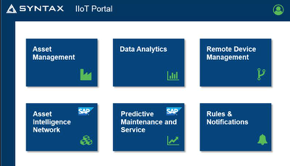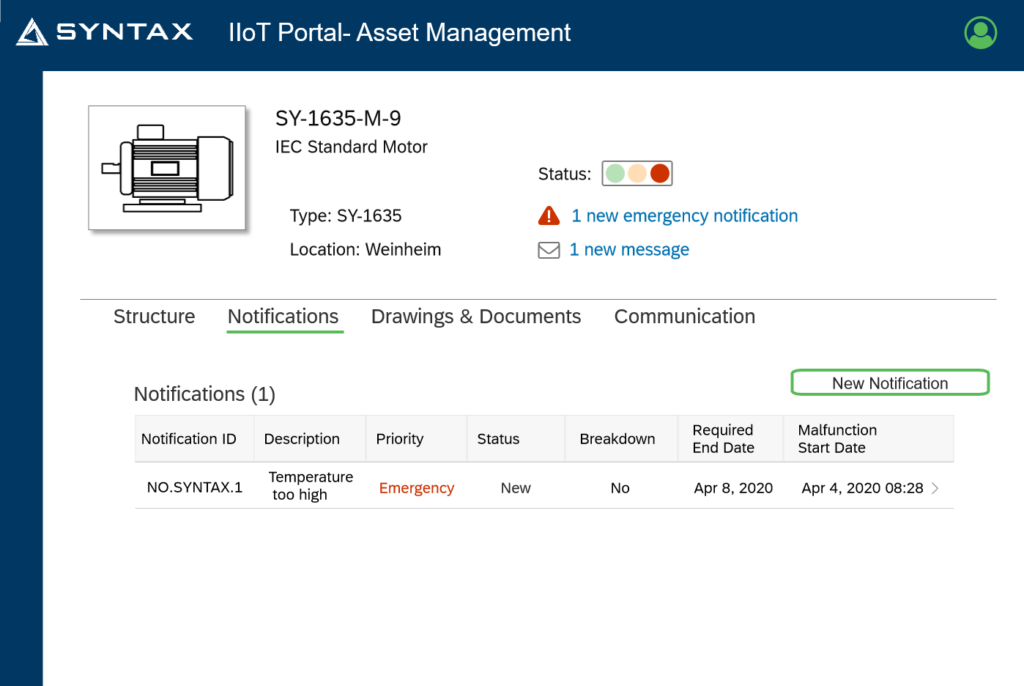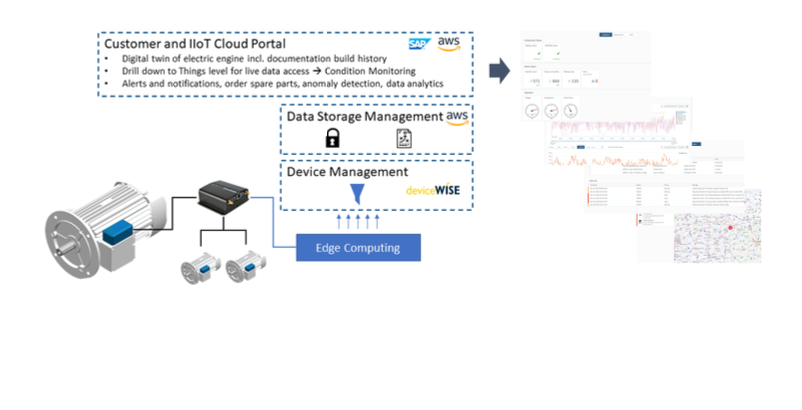A networked production line can reach its potential with cloud-based apps.
Regardless of whether you are retrofitting or purchasing new IT systems to remain competitive in manfacturing, you should develop a digitized, data-driven production strategy based on Industrial Internet of Things (IIoT). It’s important to recognize the collection and storage of production-relevant data is only half the battle. A networked production line will only realize its full potential with cloud-based applications.
There’s a huge upside to digitally transforming manufacturing production. The term Industry 4.0 describes a change in business processes and regulatory standards. With more manual processes becoming automated, the mass production of a standard product is replaced by intelligent mass production of individualized products.
Customer requirements have also changed. They don’t want to buy products; they want to rent services. They also expect to only pay for what they use in the cloud, such as offered by Amazon Web Services (AWS) with their “pay-as-you-go” cloud pricing. Those who do not move toward this change and network their production based on a central IIoT platform will be left behind.
The Path of Data and Its Role in IIoT
A major advantage of networked production environments is the availability of many relevant data points that provide transparency into processes. This can best be illustrated with an SAP system that’s used frequently in an industrial environment.
Edge devices such as routers, routing switches, integrated access devices (IADs), and multiplexers collect the data directly on the networked systems and forward them to solutions such as SAP Plant Connectivity and SAP Digital Manufacturing. This raw data can then be transferred to an AWS data lake solution as a system of record (SOR) and enriched with data from SAP systems such as SAP S/4HANA.
The added value only comes after turning the raw data into comprehensive information using cloud-based artificial intelligence (AI) and maching learning (ML) micro services, and afterwards visualizing it on a central platform such as SAP Analytics Cloud or with SAP Intelligent Asset Management Suite applications. A digital twin can then be created by visualizing this data. Findings are fed back into the systems and are planted in a feedback loop for permanent improvement.
In an ideal IIoT environment, data and information circulate in a permanent cycle. They are constantly combined and analyzed. While this sounds good in theory, there are some things to keep in mind when putting it into practice.
Quality is More Important than Quantity
Countless new data points are created every second on a running machine. Yet not all these data points are relevant, as identified by each company.
To prevent large amounts of irrelevant data from entering the data cycle, many edge devices filter data directly after it has been collected using edge computing like AWS for the Edge. This pre-processing of data and the important or unimportant decision-making requires short latencies and quick feedback because of the high throughput.
To ensure data completes the entire cycle described above, it’s transferred to the cloud via edge gateways or routers. In the cloud, companies can maximize their added value. They can use modern analysis technologies as the basis for their comprehensive automation.
Central Switching Point: An IIoT Portal on Amazon Web Services
The potential of your production data can only be used by those who rely on public cloud providers such as AWS. Their provision models through AWS CloudFormation provide flexibility and serve as the basis for additional service offerings. They link cloud-based technologies with the data collected on the shop floor.
These solutions are universal, with technically modifiable modules and can be booked and used variably according to the pay-per-use model. Since the requirements also vary in production depending on the industry, company size, and products, Syntax has developed an IIoT portal for SAP-based projects built on AWS.
Data streams from different SAP applications, IIoT-specific apps, and other systems can flow together and be intelligently distributed, processed, and analyzed. Combining AWS and SAP solutions, the Syntax IIoT platform integrates the public cloud with well established business solutions.

Once your sensors are connected, your assets can deliver operational data and relevant process data. Through business analytics, AI and ML, you can increase production quality. With the help of app templates, 80% that comprise a standard solution and 20% individual configuration, companies can quickly implement a solution via the IIoT portal to unlock the business value of their data.

Case Study: Electric Motors Manufacturer as Connected Products with IIoT
Networking, communications, and data exchanges also play a role after the product has been delivered. By offering value-added services after the sale, product manufacturers set themselves apart from their competitors. In one specific case, a manufacturer of electric motors wanted to offer its customers precisely these services.
For this purpose, a measuring module reads 15 values from the assembled motor and transfers them to an IIoT gateway configured by Syntax. Edge logics, which also use AI and ML, analyzes the flow so that only relevant data reaches the cloud. Here, the individual uses the device management to make configurations and to carry out firmware updates.
The data is then sent to the data store management system, where it is registered, collected, orchestrated, and forwarded to various apps. The data is then transferred directly to the applications via the IIoT portal, for example, as the basis for a digital twin via the SAP Asset Intelligence Network.
The end customer then also has access to this digital twin and can view information such as documentation and product history. This makes it possible to track when the engine was produced, where it was installed, and when repairs were made.

As an example, live data can show critical threshold values, or an anomaly detection detects a defect in the engine to automatically order spare parts. The engine manufacturer thus offers its customers more than a product. The comprehensive transparency delivered by the IIoT portal and AWS ensures the least number of failures, and a significantly better service experience.
Conclusion
The collection of processes and operational data is only the first step for exploiting all the advantages of networked production based on IIoT. Discuss your IIoT project with an experienced partner who knows the technology and the industry-specific requirements so you can modernize your production through Industry 4.0.
Syntax can help you improve your visibility into manufacturing processes while enhancing the efficiency of your front-line workers. To learn more, read how to put IoT into action whitepaper, download our SAP Digital Manufacturing and Industrial Internet of Things (IIoT) data sheet, and visit our resources page. You can also contact us to organize an IIoT proof of concept.

